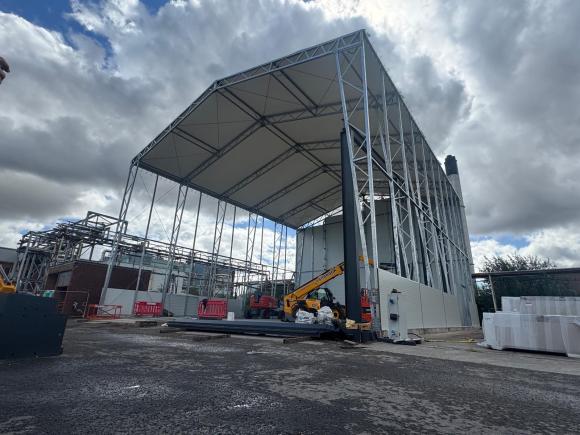
When planning temporary buildings, height is often overlooked in favour of location or size. However, selecting the appropriate height is crucial, as it directly influences functionality, efficiency and compliance. Whether you're considering a short-term storage unit, a semi-permanent workspace or a large event venue, the right height can significantly impact how well your temporary building meets your needs.
This guide explores the reasons behind choosing different heights for temporary buildings and outlines the distinct benefits of low, medium and tall structures.
Low Temporary Buildings [Under 4 metres]
Why people choose them:
Low-height temporary buildings are typically used where space or planning permission is limited. They’re ideal for simpler tasks that don’t require vertical clearance and where cost-effectiveness is a priority.
Key benefits:
- Lower overall cost: Shorter buildings use fewer materials and require less labour.
- Quick to install: Ideal when time is of the essence.
- Easier to maintain temperature: Reduced internal air volume means better energy efficiency.
- More discreet: Perfect for sites where visual impact needs to be minimal.
Typical applications:
Archive storage, temporary classrooms, overflow retail stockrooms, small workshops or garages.
Medium Height Temporary Buildings [4 to 8 metres]
Why people choose them:
This is the most versatile category and suits a wide range of commercial and industrial uses. Medium-height temporary buildings offer the flexibility to adapt to different layouts and equipment without the scale or cost of taller structures.
Key benefits:
- Optimised internal space: Offers enough height for shelving, lighting rigs or small machinery.
- Flexible design: Can be fitted out for retail, production or warehousing use.
- Cost-efficient: Strikes a balance between space, performance and budget.
- Planning-friendly: Often avoids the red tape of taller or permanent structures.
Typical applications:
Pop-up showrooms, workshops, mid-size warehouses, temporary retail spaces, disaster relief centres.
Tall Temporary Buildings [8 metres and above]
Why people choose them:
Tall temporary buildings are necessary for businesses or organisations that need extensive internal clearance. These are designed for large-scale operations or to house equipment, vehicles or stock that can’t be accommodated in standard-height structures.
Key benefits:
- Maximum usable volume: Especially useful for vertical racking and high-capacity storage.
- Vehicle and equipment access: Accommodates forklifts, lorries, plant machinery and even aircraft.
- Ideal for events: High ceilings allow for large staging, lighting, banners and crowd movement.
- Impressive presence: Delivers visual impact for exhibitions and corporate functions.
Typical applications:
Aircraft hangars, sporting arenas, distribution centres, temporary event halls, film studios.
Adding Value Through Smart Planning
If you’re in the process of comparing options for temporary buildings, understanding how height affects cost, usability and compliance is essential. A well-matched height not only ensures smoother operations but can also reduce running costs and make better use of available space.
Whether you're after a compact structure for document storage or a high-clearance building for industrial use, choosing the correct height helps you get the most from your investment in temporary buildings.

